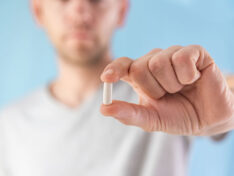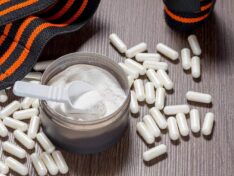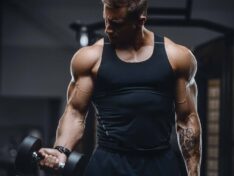5 Common Signs and Symptoms of Iron Deficiency
Five of the most common Signs and Symptoms of Iron Deficiency to uncover why you might not be feeling well.

This is a subject that’s close to my heart as my mother struggled with undiagnosed iron deficiency anemia for over 20 years, and I’ve had low iron for most of my adult life. Genetics has a role in whether you’re likely to have low iron levels, but there are many other contributing factors.
An iron deficiency can stem from a poor or unbalanced diet, bowel disease, blood loss through heavy periods, pregnancy (due to increased iron requirements), or your body may have an impaired ability to absorb iron. You’re more at risk of developing a deficiency if you are female under the age of 12, are vegetarian/vegan, or are a frequent blood donor.
The problem with an iron deficiency is that your body cannot produce enough red blood cells, which are responsible for carrying oxygen around the body. When your muscles and tissues aren’t receiving enough oxygen to work effectively, it can have a severe impact on your quality of life.
What are the different forms of iron?
Iron (Fe) is present in two forms, called hemoglobin and myoglobin. Heme iron contains one iron atom surrounded by an organic molecule called heme. This is the form of iron found in all red blood cells and most tissues in the body.
The iron in myoglobin is different: it has no heme. It is usually present in muscle tissue. Iron is a metal necessary for the functioning of many important metabolic enzymes, and it is involved in electron transport chains during cellular respiration.
The major difference between heme iron and non-heme iron is heme iron (iron that is present in hemoglobin) is found in animals like red blood cells. Non-heme iron is found in plants and animals.
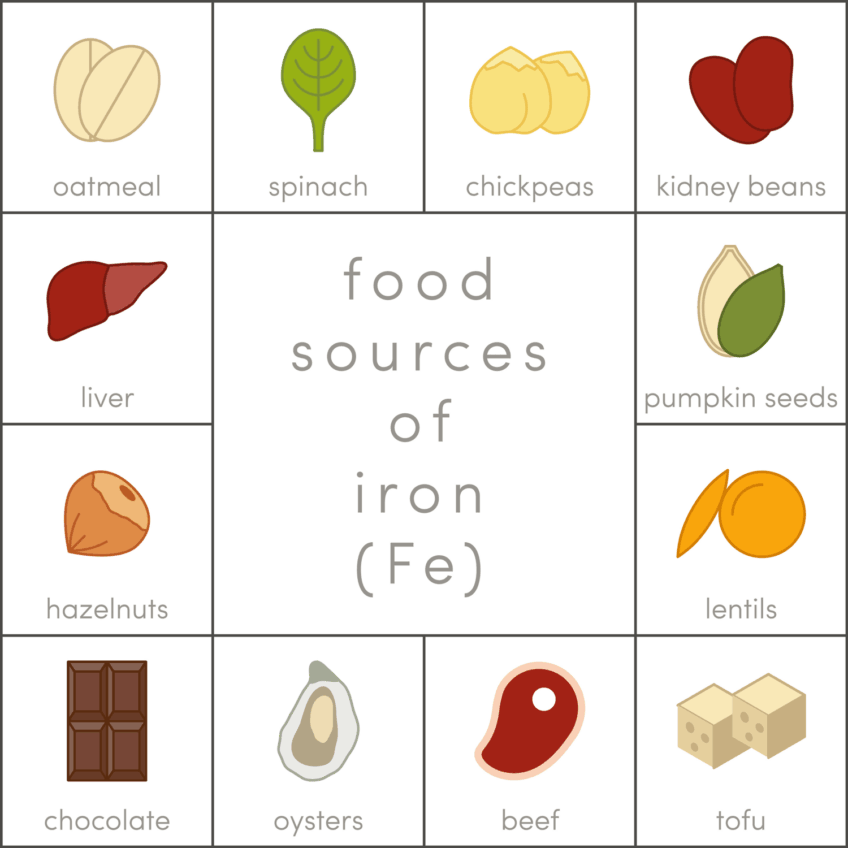
Some plant-based foods that are good sources of iron, such as spinach, have low iron bioavailability (as low as 2%) because they contain iron absorption inhibitors, such as polyphenols.
Heme iron (animal-based), on the other hand, has upwards of 20% bioavailability. Iron from meat is the superior form by far!
What are the symptoms of iron deficiency?
If you’re worried about whether you might have a deficiency, these are the five most common signs and symptoms:
1. Fatigue
This is the number one symptom that people with an iron deficiency experience and affects over 50% of people with a deficiency. It’s also why your doctor will test your iron levels if you feel continuously tired.
If you feel like you can’t get through the day without a mid-afternoon nap or find yourself crawling into bed at 7pm (that’s what happened to me!) This can indicate you need blood tests because your iron levels might be low.
Why does it happen?
You get tired if you have an iron deficiency because your body’s tissues and muscles aren’t getting enough oxygen, which means they are not functioning optimally. In addition, your heart has to work harder to transport the available oxygen, making you even more tired.
2. Paleness or Yellow-Hued Skin
From a clinical perspective, this is the most important indicator of iron deficiency. Alone it is not enough to prove an iron deficiency, but if taken with other symptoms, it may mean that you’re not getting enough iron (or your body is struggling to absorb the iron that you are consuming).
Why does it happen?
Again, it’s the lack of hemoglobin in your red blood cells and an insufficient number of red blood cells. Because you don’t have enough red blood cells reaching the skin's surface (as they have been diverted to supply your vital organs), you will experience resulting paleness.
3. Headaches
Headaches are a common symptom of low iron as it indicates the brain is not getting enough oxygen. Taken alone, headaches are not a clear indicator of an iron deficiency, as they are a common symptom of many other conditions. However, headaches are often accompanied by feelings of light-headedness and dizziness. If all three symptoms are present, it is important to get your iron levels checked by a medical professional.
Why does it happen?
Low levels of hemoglobin mean that there is a lack of oxygen in the brain. This causes the blood vessels in the brain to swell, and that inflammation could be the source of head pain. Unfortunately, unless the source of the headaches is resolved (your iron deficiency), you’re going to continue to suffer from headaches.
4. Heart Palpitations
Heart palpitations are scary and might have you worried about your cardiovascular health. But, far from having a heart condition, they might be a sign that you are iron deficient. Heart palpitations are the feeling of noticeable heartbeats and may sometimes present as an irregular heartbeat or an abnormally fast heartbeat. In extreme cases (although this is uncommon), an iron deficiency can lead to a heart murmur, an enlarged heart, or even heart failure.
Why does it happen?
Palpitations are caused by your body’s low levels of red blood cells. If you don’t have enough of these important cells, your heart has to work overtime to get oxygen circulating throughout the body.
5. Shortness of Breath or Irregular Breathing
While it may sound like a convenient excuse to get out of exercising, low iron levels can make it more difficult to breathe normally. If you’ve found yourself having to pause on a flight of stairs to catch your breath or reducing your daily activities like walking or going to the gym because you can’t breathe properly, you might have an iron deficiency.
Why does it happen?
Low hemoglobin levels mean your body’s oxygen levels are also low, making it much more difficult to do normal daily activities like walking, let alone a HIIT session at the gym. Your body then tries to compensate by increasing your breathing rate to get more oxygen.
Other Common Signs and Symptoms
There are many different signs and symptoms associated with iron deficiency because low levels of iron in the blood impact every area of the body. In addition to those above, other signs include:
- Weakness and dizziness
- Temperature sensitivity
- Chest pain
- Restless leg syndrome
- Difficulty concentrating
- Brittle nails
- Damaged skin
- Hair loss
- Chest pain
- Pica (strange cravings for non-food items like ice or dirt)
- Burning tongue
- Dry or sore mouth
- Tinnitus
- Anxiousness
- Frequent infections
What supplements should you take for an iron deficiency?
If you’re not getting enough iron from your diet, it may help to take oral iron supplements, which come in a wide range of different types, including drops, capsules, and pills. They all contain varying amounts of “elemental iron” (the iron in your body), but check the label before buying to see how much of this type of iron is contained in the supplement.
Most iron supplements don’t require a prescription, and your doctor can help you choose the best option. In general, up to 25 mg of iron per day is recommended. You should only take the amount of iron prescribed by your doctor as it may have some side effects (such as an upset stomach or constipation), and there are also associated risks, especially if you have a chronic condition.
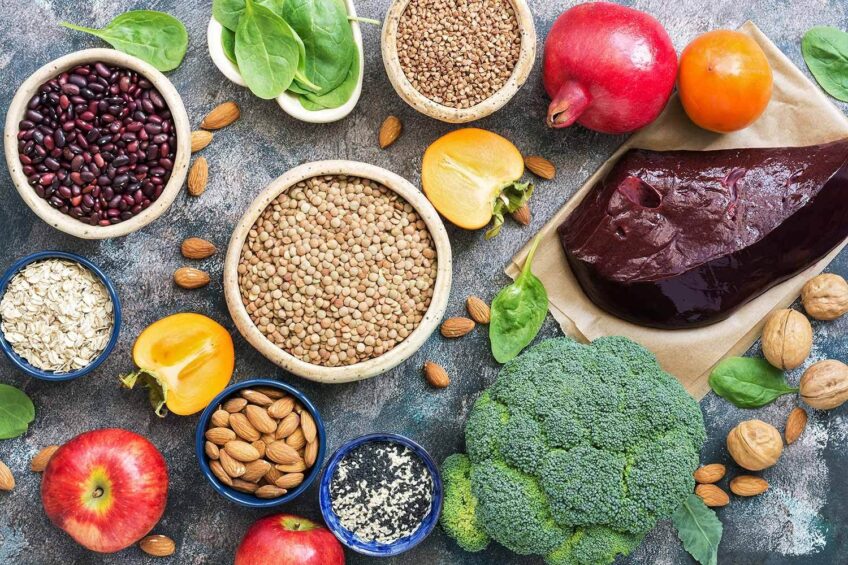
Remember to disclose any other medication or supplements you are taking to your doctor, as iron supplements may interact with certain medicines. Additionally, it can harm your health if you take too much iron.
These are highly recommended brands to choose from:
- Ferrochel by Designs for Health
- Iron-C by Pure Encapsulations
- Iron Bisglycinate by Thorne
- Iron Complex by Integrative Therapeutics
To improve your body’s ability to absorb iron supplements, they should be taken with Vitamin C either in food form (such as oranges and red bell peppers) or as a supplement.
My Thoughts?
For me, prevention is always better than a cure. If you’ve had your iron and ferritin levels checked in the past and they were low, there’s a good chance that it’s something that you need to monitor proactively.
There’s a lot you can do diet-wise to increase the amount of iron you’re consuming and improve your body’s ability to absorb and use iron (foods rich in Vitamin C will be your friend here).
But, it might not be enough to keep your body’s iron levels where they need to be, and an iron supplement can make all the difference. First, there’s the peace of mind that comes with taking a daily supplement, and second, there are the obvious vitamin benefits of regular deposits of bioavailable iron that your body can use to top up your levels.
For women especially, keeping your iron levels up is important and an ongoing task, as monthly periods will reduce the level of iron in your blood. Additionally, it’s more common for women (especially pregnant women) to struggle with absorbing sufficient amounts of iron from food or supplements that have been ingested, especially as they get older.
A woman's multivitamin can do wonders for iron and other essential nutrients.
Something my doctor recommended that I’ve been trying is avoiding tea and coffee for an hour before and after meals, particularly if I’m eating a meal that is rich in iron. This is because they both contain tannins, which inhibit iron absorption. That means even if you’re consuming enough iron in your diet, your body can’t use any of that iron.
If you haven’t had blood tests recently and you’re experiencing some of the symptoms that I’ve covered, it’s definitely worth making an appointment. An iron deficiency, if left unaddressed, can have serious implications for your health, and, as has been my experience, it also has a huge impact on your quality of life.
Now, eat a steak (or better yet, beef liver) and get your iron levels up!
Tony Lee, MS, RD
Tony Lee, RD, MS, is a highly qualified and accomplished Registered Dietitian with a Master’s Degree in Nutrition Sciences. Tony brings over two decades of experience in dietetics, specializing in sports nutrition. Interests include studying all aspects of wellness, fitness, genetics, and peak health performance.











